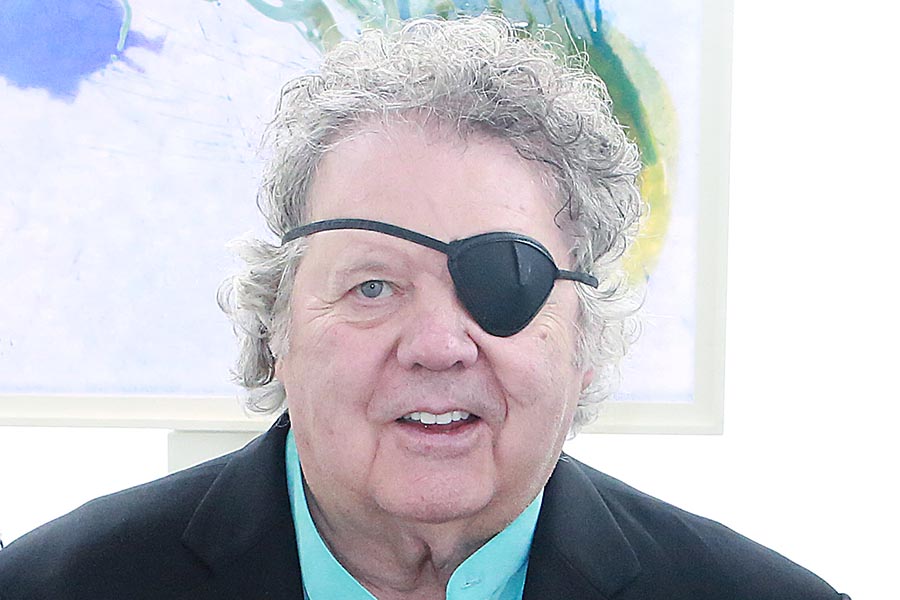Born in 1941 in Tacoma, Washington, Dale Chihuly was introduced to glass while studying interior design at the University of Washington. After graduating in 1965, Chihuly enrolled in the first glass program in the country, at the University of Wisconsin. He continued his studies at the Rhode Island School of Design (RISD), where he later established the glass program and taught for more than a decade.
In 1968, after receiving a Fulbright Fellowship, he went to work at the sVenini glass factory in Venice. There he observed the team approach to blowing glass, which is critical to the way he works today. In 1971, Chihuly cofounded Pilchuck Glass School in Washington State. With this international glass center, Chihuly has led the avant-garde in the development of glass as a fine art.
His work is included in more than 200 museum collections worldwide. He has been the recipient of many awards, including two fellowships from the National Endowment for the Arts and twelve honorary doctorates.
Chihuly has created more than a dozen well-known series of works, among them, Cylinders and Baskets in the 1970s; Seaforms, Macchia, Persians, and Venetians in the 1980s; Niijima Floats and Chandeliers in the 1990s; and Fiori in the 2000s. He is also celebrated for large architectural installations. In 1986, he was honored with a solo exhibition, Dale Chihuly objets de verre, at the Musée des Arts Décoratifs, Palais du Louvre, in Paris. In 1995, he began Chihuly Over Venice, for which he created sculptures at glass factories in Finland, Ireland, and Mexico, then installed them over the canals and piazzas of Venice.
In 1999, Chihuly started an ambitious exhibition, Chihuly in the Light of Jerusalem; more than 1 million visitors attended the Tower of David Museum to view his installations. In 2001, the Victoria and Albert Museum in London curated the exhibition Chihuly at the V&A. Chihuly’s lifelong fascination for glasshouses has grown into a series of exhibitions within botanical settings. His lifelong fascination for glasshouses has grown into a series of exhibitions within botanical settings.
The Garden Cycle began in 2001 at the Garfield Park Conservatory, in Chicago, and continued at several locations, among them the Royal Botanic Gardens, Kew, near London, in 2005, and the New York Botanical Garden, in the Bronx, in 2006 and again in 2017. Meanwhile, Chihuly has exhibited at other venues as well, including the de Young Museum in San Francisco, in 2008; the Museum of Fine Arts, Boston, in 2011; the Virginia Museum of Fine Arts, Richmond, in 2012; the Montreal Museum of Fine Arts, in 2013; the Royal Ontario Museum, Toronto, in 2016; and the Crystal Bridges Museum of American Art, Bentonville, Arkansas, in 2017. In addition, Chihuly Garden and Glass, a major long-term exhibition, opened at Seattle Center in 2012.
More on the artist’s website.
Artwork
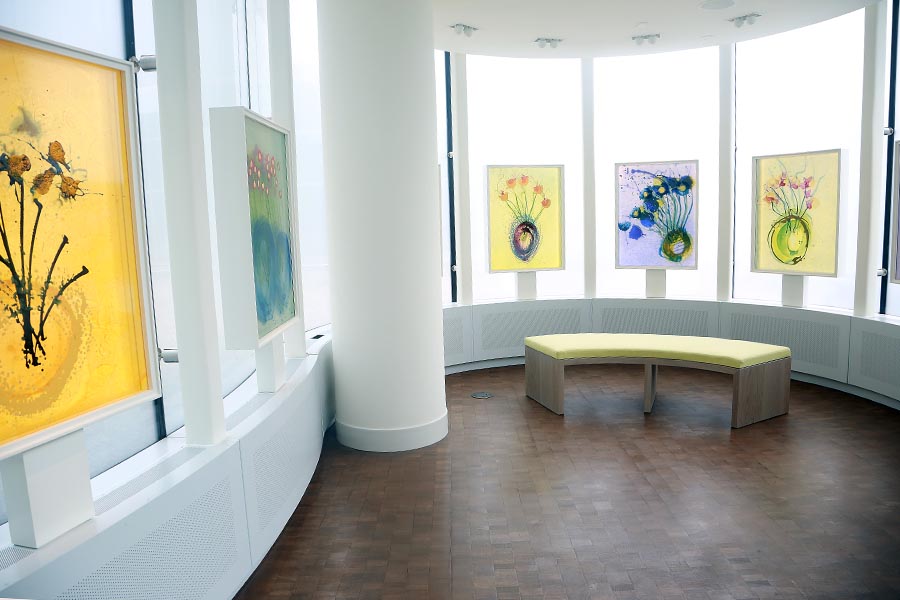
Ikebana Glass on Glass Paintings
Glass on Glass by Dale Chihuly fluently articulates the artist’s mastery of the transmission of light through transparent media.
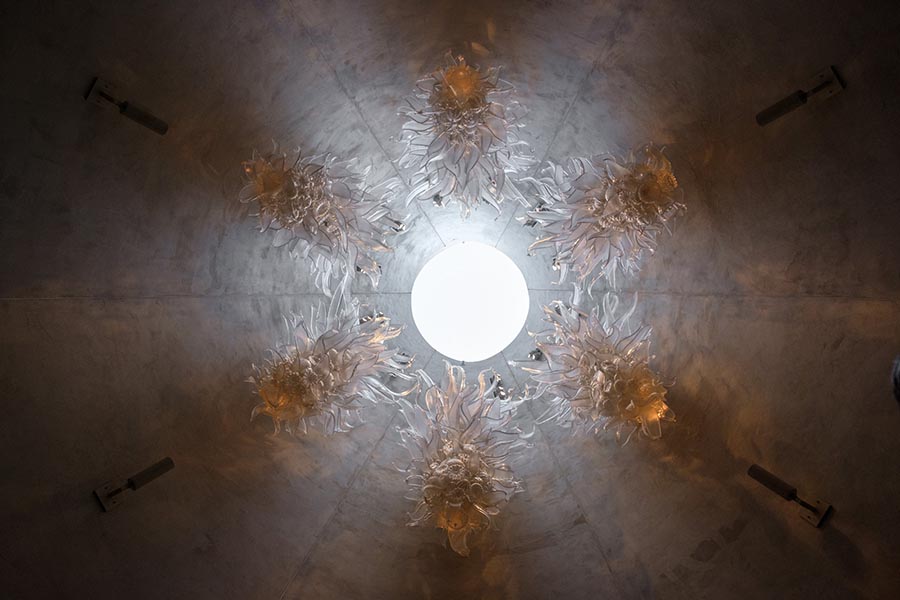
Reflection Room Crystal Sconces
The Reflection Room Crystal Sconces by Dale Chihuly are composed of approximately 2,000 crystalline glass forms, amassed within the Reflection Room's cone-like architectural form

Niijima Floats
Dale Chihuly's large spheres—up to forty inches in diameter and weighing sixty pounds— are named for small green and blue Japanese fishing floats he found as a child on the shores of Puget Sound.
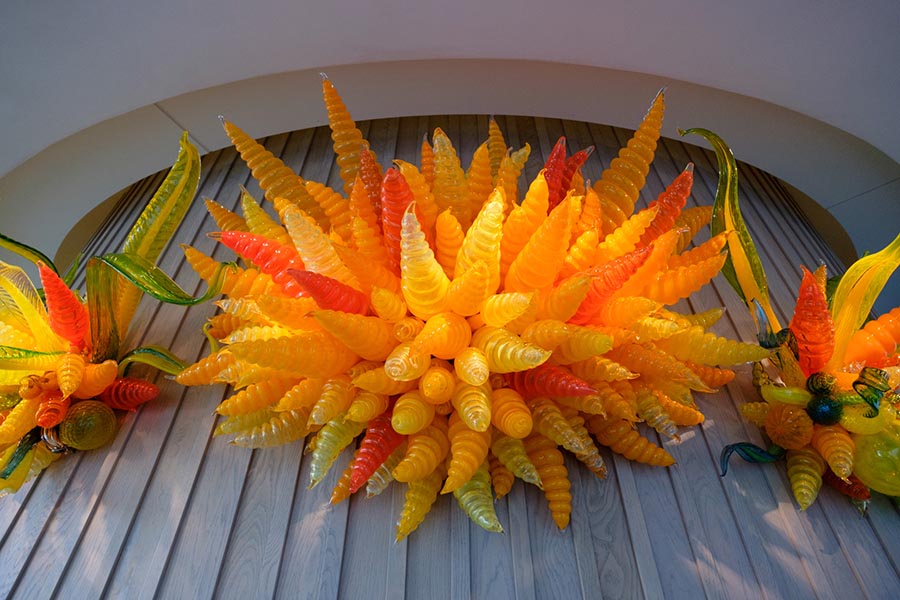
Orange and Yellow Hornet Sconce, Rising Sun Sconce Wall
Dale Chihuly’s sconces are wall installations composed of blown-glass elements that are created in response to a specific environment.
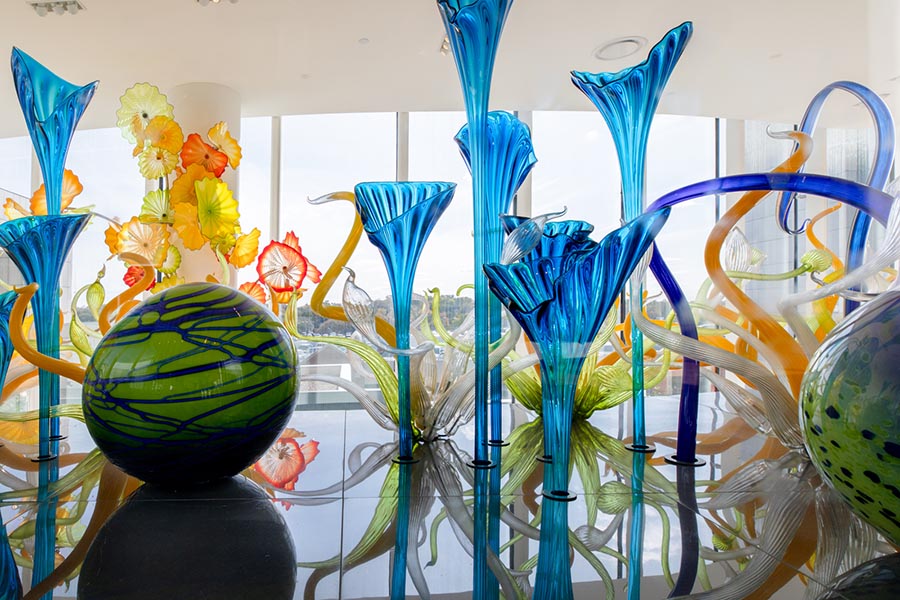
Mille Fiori, interior
Combining brilliantly colored, flora-like elements, Dale Chihuly creates spectacular gardens of glass, a manifestation of his lifelong fascination with nature and flowers, which was inspired by his mother’s passion for gardening.
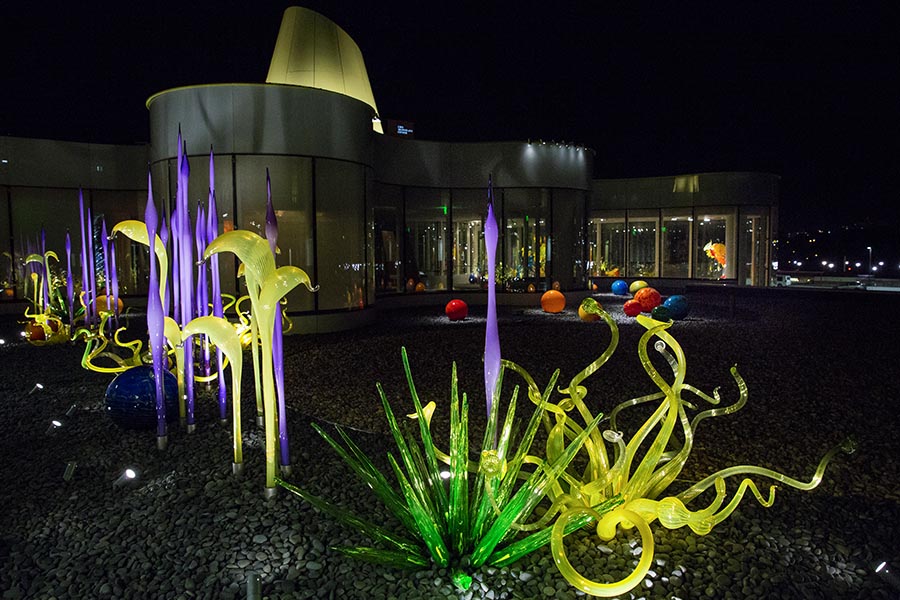
Mille Fiori, exterior
The outside portion of Mille Fiori features an array of Dale Chihuly’s whimsical, nature-inspired, blown-glass elements, including reeds, herons, and grass clusters.

Sapphire Icicle Tower
The Sapphire Icicle Tower, which stands at 11 feet, exemplifies Dale Chihuly’s desire to mass color on a steel armature for dramatic effect. Its approximately 325 pieces create what he calls “a core of color.”
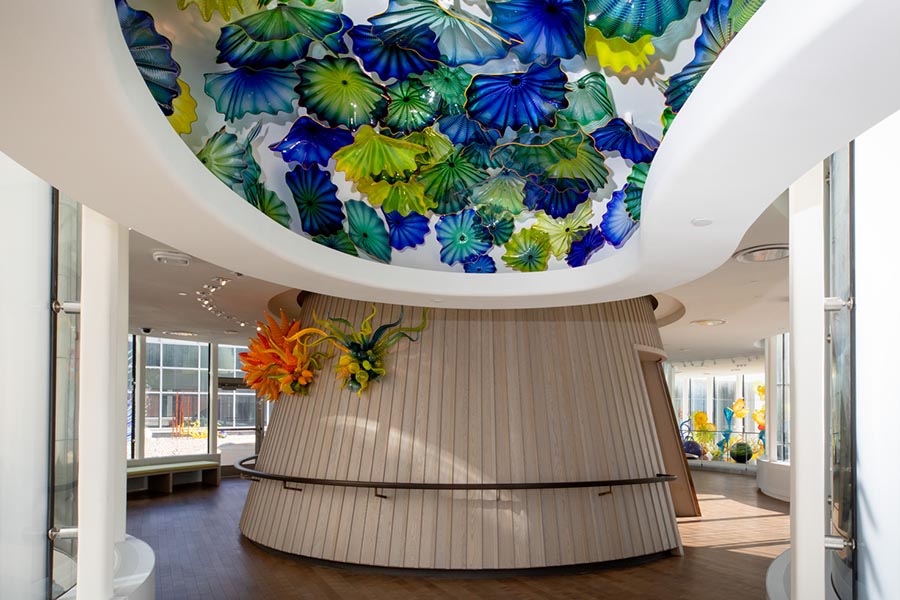
Azure and Jade Persian Ceiling
An example of Dale Chihuly's Persian series, which began in 1986, this Persian Ceiling The Persian series evokes historical decorative arts, suggesting ancient eastern Mediterranean and Islamic influences.
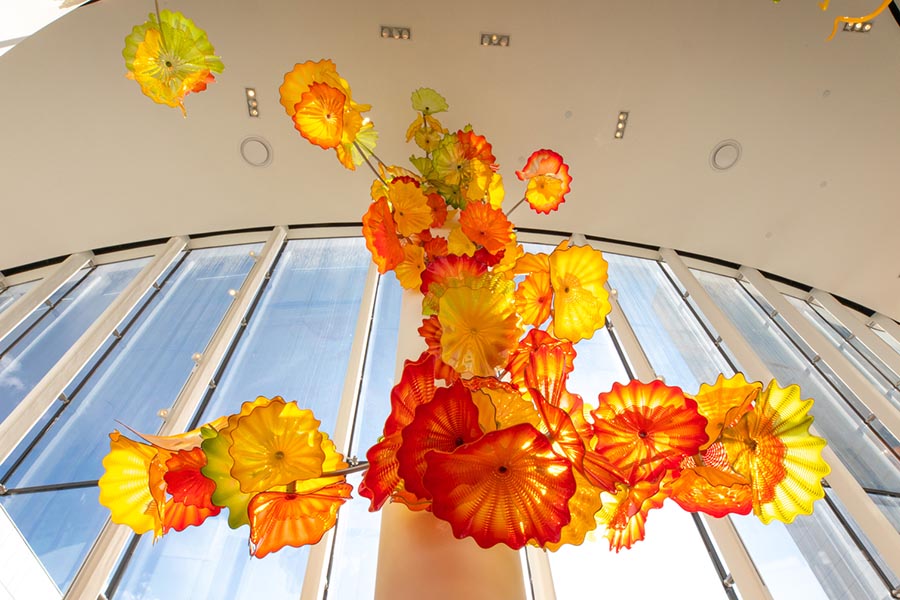
Sunrise Perisan Columns
With the ceiling-hung Sunrise Persian Columns by Dale Chihuly, the blossoming shapes focus and reflect light in such a way that their open forms illuminate architectural spaces and environments.
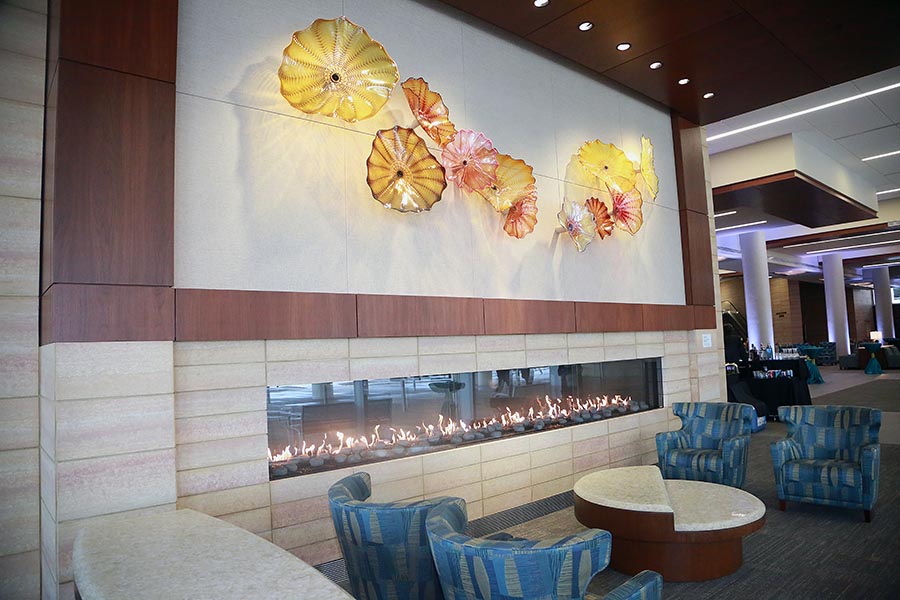
Autumn Leaves Persian Installation
Persians by Dale Chihuly are blown-glass rondels in swirling, irregular shapes. Here, the opulent golds, oranges and reds harken the colors of autumn, and the undulating forms are reminiscent of leaves blowing in the wind.
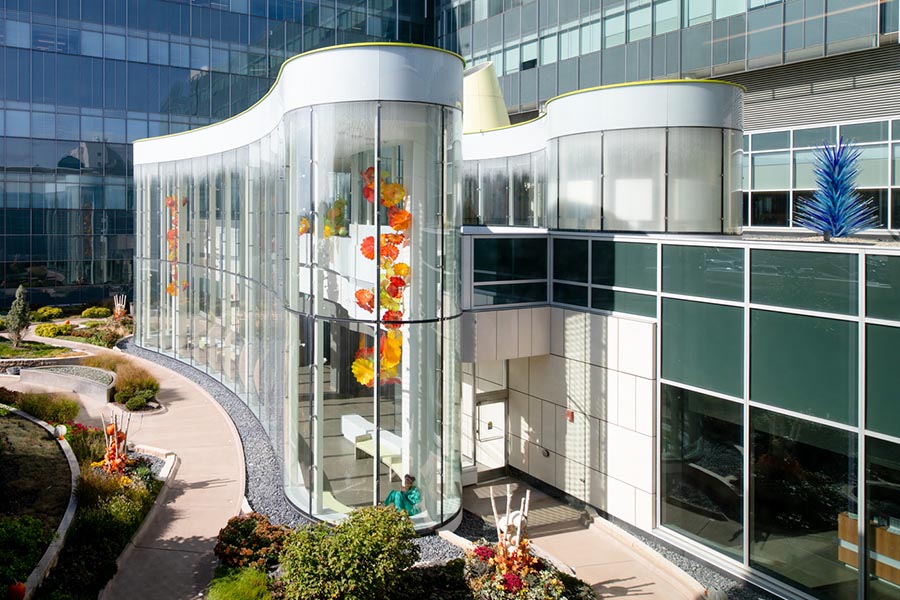
Chihuly Sanctuary
The Chihuly Sanctuary is the cornerstone of the Healing arts Program at UNMC and Nebraska Medicine. It is the culmination of Dale Chihuly’s decades of experiments in light, space and form.
